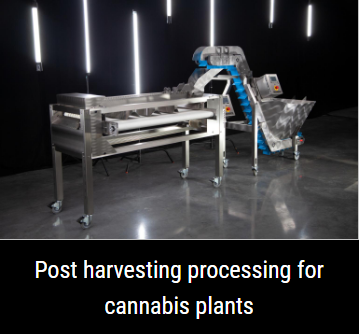Welcome to Sino Bearings web
24x7 HOTLINE:+86-28-81454188

 TECHNOLOGY
TECHNOLOGY
New innovations are coming online to aid the farming community. Here are 3 of the latest.
Robots to improve rural productivity
Dorset on England’s south coast is not known globally as a tech hub but an interesting robotics project is underway. The Small Robot Company (SRC), Wessex Internet, Telint and Dorset Council are teaming up to trial a blueprint for rural-optimised 5G connectivity, with the world’s first 5G-ready agri-robot for arable farms. The £7 million project will attempt to develop an affordable, reliable and interoperable 5G network that is custom-built for farmers and the specific challenges of rural connectivity.
“This 5G blueprint could be a catalyst for rural economies – with our robots demonstrating the potential for 5G to transform agricultural productivity. Connectivity is not a luxury. It’s a utility. And vital to economic performance,” said Ben Scott-Robinson, CEO and co-founder, Small Robot Company. “5G technological development within agriculture is vital post-Brexit. One of the biggest obstacles facing UK farmers in adopting new technologies is poor connectivity around the farm. This 5G blueprint will pave the way for growth in the rural economy – and alongside it greatly-improved quality of life.”
Hector Gibson Fleming, managing director of Wessex Internet added: “Our work taking full-fibre broadband to farms, homes and businesses in rural communities has shown us how great connectivity can transform countryside communities. But connectivity across farms remains a massive issue. Exciting technological developments in agriculture have the potential to transform farming, but are held back by poor connectivity and mobile coverage. We hope the 5G networks we’re building across a number of Dorset farms, and the exciting 5G applications we’re trialling, such as Small Robot Company’s agri-robots, will be a shining example of what the future can look like.”
The plan is that 5G robotics will enable real time capabilities such as the ability to quickly identify pests like slugs and rapidly take action, enabling farmers to act faster to exploit the UK’s weather conditions. Reducing the use of pesticides by improved precision mapping and weeding without the use of herbicides is set to improve biodiversity and soil health. It will also provide farmers with live operational information such as soil moisture and crop emergence. Seamless and real-time data and systems integration will also break down vertical silos, eliminating manual data transfer, reducing costs and greatly improving decision making.
The trials will be the first to demonstrate wide-scale autonomy of robotic farming operation, including the development of the UK’s first 5G-ready agri-robot; development of the first scalable, costed, ‘as a service’ agri-robot product; development of SRC’s first ready-for-market agri-robot; and development of SRC’s on-farm 5G-enabled robot ‘kennel’. The 5G-connected robot handler app also brings the potential of a remote operator seeing live data or taking live control of the robot.
The within-farm robot-to-kennel communications is fundamental to the real-time capabilities, as well as the farm itself being better connected. The on-farm 5G-enabled robot kennels will aim to process large volumes of data from robots on-the-fly, exploiting the benefits of using higher frequency 5G spectrum and infrastructure. Mike Donnachie, Farm Manager at Ranston Farms noted: “Having precise and accurate data to hand so I can make instant decisions will bring great benefit into the future.”
AI aiding forward planning
Meanwhile in America Bayer Crop Science and Biome Makers are examining a new technology dubbed bioRxiv to see if it is able to assess the effectiveness of Bayer´s biological fungicide Minuet. Machine learning software enabled the company to predict potato yield improvement before applying the chemical. The predicted result was a yield increase of up to 40% in one of the fields tested in Idaho. Varghese Thomas, project leader at Bayer said, “It’s a unique approach to utilise soil biology and optimise the use of crop inputs moving forward towards sustainable and economically favourable solutions to improve crop productivity.”
The team is now trying to train the AI to examine other issues like shelf-life, plant nutrient quality and projected carbon credits.
Sorting tech in the weed business
Staying in America GreenBroz has launched a new sorting machine for cannabis called the Rise-N-Sort. It’s a post-harvest system with a conveyor, precision sorter and sorter table to grade the plant material. Cullen Raichart, founder and CEO of GreenBroz commented, “We are beyond excited to provide a purpose-built, industry-born solution that retains the quality of the product by protecting the delicate trichomes, while also increasing throughput significantly.”
It’s made of food-grade stainless steel, surgical steel, polyurethane and ultra-high-molecular-weight polyethylene (UHMW) and it was created using rapid prototyping in the firm’s in-house design lab.
It features a digital HMI touch screen and everything is washdown-ready, even the motors.